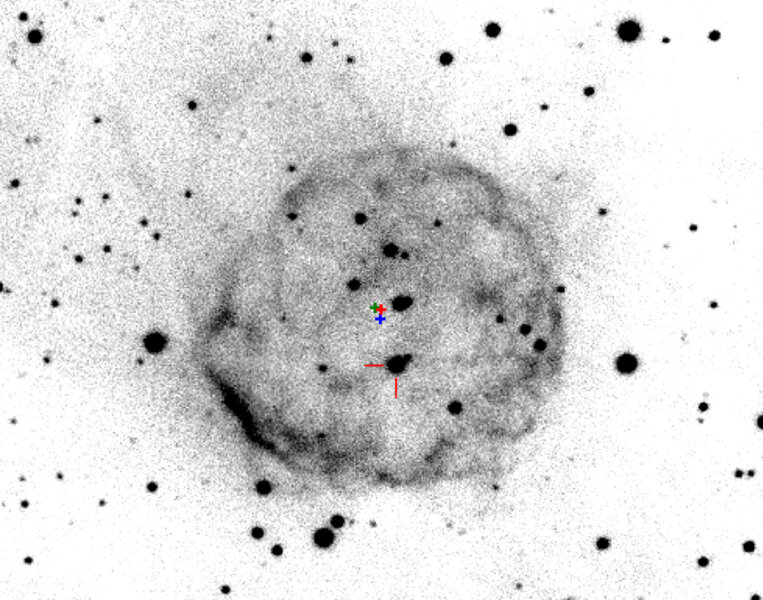Create a free profile to get unlimited access to exclusive videos, sweepstakes, and more!
Raiders of the Lost Nova
Let me tell you a tale: One of ancient, mysterious texts, hidden treasures, and a race to discover an object of great power and destructive force.
Almost 600 years ago — on the evening of March 11, 1437 — Korean royal astronomers noted a “new” star appearing in the sky. It brightened into visibility in the constellation of Wei (what we now call the tail of Scorpius) and remained visible for two weeks before fading away.
Those Korean astronomers were keen observers, and carefully recorded what they saw in the Sejong Sillok, the records made during the reign of King Sejong, noting the position and appearance of the star.
With more modern eyes, this event sounds like a nova: a colossal explosion on the surface of a small but gravitationally fierce white dwarf. These are the extremely dense cores of stars like the Sun, exposed to space after the star uses up its nuclear fuel, expands, and blows off its outer layers. A white dwarf can have a mass much like the Sun, but is compressed by its gravity into a ball only the size of the Earth. They’re so ridiculously dense that a cubic centimeter (the size of a six-sided die) can have a mass of a ton! Roll that for initiative.
In many cases, the white dwarf isn’t alone; it’s part of a binary system, orbiting with a “normal” star. If the other star is close enough, the intense gravity of the über-dense dwarf can draw material off the other star, which piles up on the surface. The gravity there is so strong that, if enough material builds up, it can get squeezed under sufficient pressure to undergo nuclear fusion. The hydrogen converts to helium, and there is a cataclysmic flash: a nova (in fact, we call these kinds of nova progenitor stars “cataclysmic variables”). At its peak, a nova can emit a million times as much energy as the Sun does, and blow out a vast shell of hydrogen and helium gas expanding outward at thousands of kilometers per second! You do not want to be near one of these when they go off.
Mind you, the Koreans were good at what they did, but they didn’t have telescopes. The location of the nova was described in their books, but it was only a rough position. This is a crowded field in the sky, so recovering it now isn’t easy.
Modern astronomers have looked for Nova 1437 based on the Korean records, but the description of the nova’s location in the old text is a bit ambiguous; the Korean royal astronomers note it’s between the second and third star of the constellation Wei, but don’t specifically say which stars those are. The maps don’t number the stars! So this description depends on where you start counting stars in the constellation. For years, astronomers have made an assumption on which stars are the ones mentioned, and searched based on that. But it turns out they were using the wrong stars, and they were searching in the wrong place.
Recently, however, a team of astronomers looked over these Korean records and compared them to Chinese maps made around the same time (since, after all, Korean astronomers adopted some Chinese methodology in their own maps). Based on that, this team adopted a different numbering strategy for the stars than had been done before, and therefore searched in a different part of the sky. And when they did, they found a bright shell of material right where it was described. There’s no substitute for looking in the right place.
This image shows the material as seen in the light of hydrogen gas by the Swope Telescope in Chile. It has the exact structure you’d expect from a nova explosion, an overall shell-like appearance, with lots of filaments created as the gas sweeps up the material between stars. The distance is uncertain, but it’s likely 1500 – 3000 light-years away, making the shell 0.8 to 1.5 light-years across, about what you’d expect given its age.
But the next problem: Which star is the nova? The star in the center is not a cataclysmic variable (or CV), so is not the source of the nova. Not far from center, however, is a binary star that is a CV. This is where things get cool: The star is moving through space with a motion that can be determined by comparing its position now with images taken in 1923. You might think that the expanding gas would move through space with it, but that material slows down as it slams into the thin gas in interstellar space (the CV stars themselves are much smaller and denser, so that effect is negligible for them). Making an assumption about that deceleration, the astronomers found if they trace their motion back to 1437, the positions of the center of the gas and the CV stars overlap very well. They found the culprit!
Checking old records, the astronomers found that the star system has undergone several far smaller outbursts in more recent times, including 1934, 1935, and 1942*.
This is more than just an interesting historical footnote: There’s very important science here.
There are two different types of nova systems seen in space. The only difference between them is the rate at which mass from the physically larger star dumps onto the smaller white dwarf. As I said earlier, in the “classical” nova scenario, the rate of mass flowing is high, the material piles up on the white dwarf, the fusion point is reached, and kablam!
In the other scenario, the transfer rate is much lower, and the material builds up into a disk swirling around the star. The flow in the disk can develop instabilities, and these can grow and dump material onto the dwarf. This leads to a series of smaller — but still huge by human standards — explosions (confusingly) called “dwarf novae.”
These two systems are nearly identical except for the mass transfer rate (swapping material from one to the other can be tricky and the outcome can depend on how fast it happens). The orbital periods and star masses are the same in both kinds of systems, making astronomers think classical novae and dwarf novae are linked somehow, but no connection has ever been conclusively found.
It’s been thought for a while that after a large classical nova explosion, the mass transfer rate is amplified, but then slows down, eventually turning the classical system into a dwarf nova system. This has never been seen directly, though, and it’s not clear from the theoretical work how long this slowdown takes.
But this new discovery changes that! We know that Nova 1437 was a classical one, given its brightness. But we also know that it underwent a series of (smaller) dwarf nova outbursts from 1934 to 1942. This shows conclusively that some centuries after a classical outburst the system changed into a dwarf nova system, and gives us an upper limit to how long it takes.
There’s nothing that’ll make scientists jump to action like looking at ancient texts that lead to a new set of observations that themselves lead to the (re)discovery of an old object. I imagine there’ll be top people working on it right away, nailing this case closed and filing it away with all the other wonderful discoveries made in recent times.
After all, we humans are simply passing through history. But this nova, this is history.
* I’ll note that a lot was going on in the 1930s around that time.
















